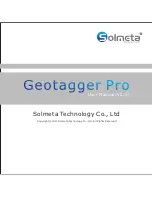
190-01263-01 Rev. A
Garmin G2000 Pilot’s Guide for the Cessna T240
345
Hazard avoidance
SY
ST
eM
o
ver
vie
W
FL
iGHT
in
ST
rUM
en
TS
ei
S
aU
dio
&
cn
S
FL
iGHT
M
ana
G
eM
en
T
Hazard
av
oid
ance
a
Fc
S
addi
Tiona
L
Fea
TU
re
S
a
PP
endice
S
inde
X
The display of No Radar Coverage is active when either the NEXRAD or Echo Tops weather products
are enabled for display. Areas where NEXRAD radar coverage and Echo Tops information is not currently
available, or outside of the selected coverage source area (e.g. USA or Canada), or is not being collected are
indicated in a gray shade of purple (Figure 6-6).
r
eflectivity
Reflectivity is the amount of transmitted power returned to the radar receiver. Colors on the NEXRAD
display are directly correlative to the level of detected reflectivity. Reflectivity as it relates to hazardous
weather can be very complex.
The role of radar is essentially to detect moisture in the atmosphere. Simply put, certain types of weather
reflect radar better than others. The intensity of a radar reflection is not necessarily an indication of the
weather hazard level. For instance, wet hail returns a strong radar reflection, while dry hail does not. Both
wet and dry hail can be extremely hazardous.
The different NEXRAD echo intensities are measured in decibels (dB) relative to reflectivity (Z). NEXRAD
measures the radar reflectivity ratio, or the energy reflected
back to
the radar receiver (designated by the
letter Z). The value of Z increases as the returned signal strength increases.
neXraD l
imitationS
NEXRAD radar images may have certain limitations:
• NEXRAD base reflectivity does not provide sufficient information to determine cloud layers or precipitation
characteristics (wet hail vs. rain). For example, it is not possible to distinguish between wet snow, wet
hail, and rain.
• NEXRAD base reflectivity is sampled at the minimum antenna elevation angle. An individual NEXRAD
site cannot depict high altitude storms at close ranges. It has no information about storms directly over
the site.
• When zoomed in to a range of 30 nm, each square block on the display represents an area of four square
kilometers. The intensity level reflected by each square represents the
highest
level of NEXRAD data
sampled within the area.
The following may cause abnormalities in displayed NEXRAD radar images:
• Ground clutter
• Strobes and spurious radar data
• Sun strobes (when the radar antenna points directly at the sun)
• Interference from buildings or mountains, which may cause shadows
• Metallic dust from military aircraft, which can cause alterations in radar scans
neXraD l
imitationS
(c
anaDa
)
• Radar coverage extends to 55ºN.
• Any precipitation displayed between 52ºN and 55ºN is displayed as mixed regardless of actual precipitation
type.
This manual downloaded from http://www.manualowl.com
















































